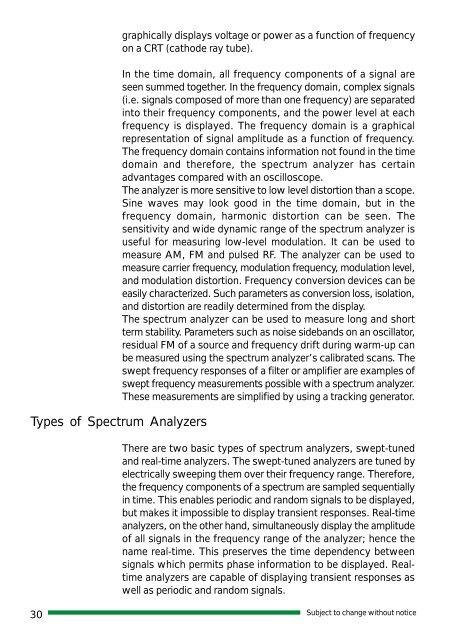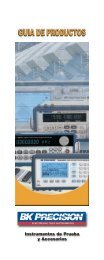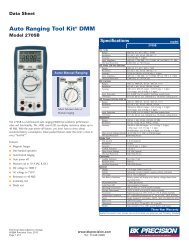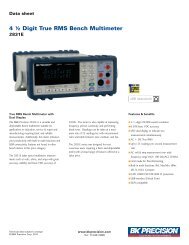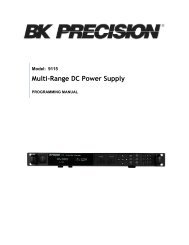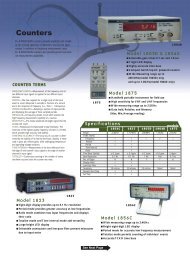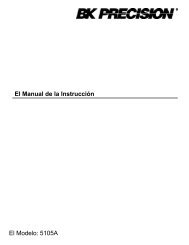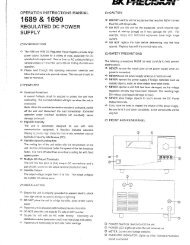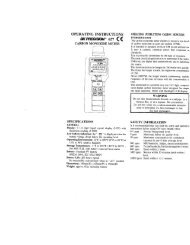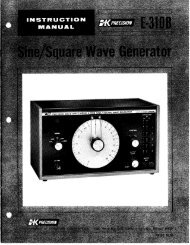2635 manual - BK Precision
2635 manual - BK Precision
2635 manual - BK Precision
Create successful ePaper yourself
Turn your PDF publications into a flip-book with our unique Google optimized e-Paper software.
Types of Spectrum Analyzers<br />
graphically displays voltage or power as a function of frequency<br />
on a CRT (cathode ray tube).<br />
In the time domain, all frequency components of a signal are<br />
seen summed together. In the frequency domain, complex signals<br />
(i.e. signals composed of more than one frequency) are separated<br />
into their frequency components, and the power level at each<br />
frequency is displayed. The frequency domain is a graphical<br />
representation of signal amplitude as a function of frequency.<br />
The frequency domain contains information not found in the time<br />
domain and therefore, the spectrum analyzer has certain<br />
advantages compared with an oscilloscope.<br />
The analyzer is more sensitive to low level distortion than a scope.<br />
Sine waves may look good in the time domain, but in the<br />
frequency domain, harmonic distortion can be seen. The<br />
sensitivity and wide dynamic range of the spectrum analyzer is<br />
useful for measuring low-level modulation. It can be used to<br />
measure AM, FM and pulsed RF. The analyzer can be used to<br />
measure carrier frequency, modulation frequency, modulation level,<br />
and modulation distortion. Frequency conversion devices can be<br />
easily characterized. Such parameters as conversion loss, isolation,<br />
and distortion are readily determined from the display.<br />
The spectrum analyzer can be used to measure long and short<br />
term stability. Parameters such as noise sidebands on an oscillator,<br />
residual FM of a source and frequency drift during warm-up can<br />
be measured using the spectrum analyzer’s calibrated scans. The<br />
swept frequency responses of a filter or amplifier are examples of<br />
swept frequency measurements possible with a spectrum analyzer.<br />
These measurements are simplified by using a tracking generator.<br />
There are two basic types of spectrum analyzers, swept-tuned<br />
and real-time analyzers. The swept-tuned analyzers are tuned by<br />
electrically sweeping them over their frequency range. Therefore,<br />
the frequency components of a spectrum are sampled sequentially<br />
in time. This enables periodic and random signals to be displayed,<br />
but makes it impossible to display transient responses. Real-time<br />
analyzers, on the other hand, simultaneously display the amplitude<br />
of all signals in the frequency range of the analyzer; hence the<br />
name real-time. This preserves the time dependency between<br />
signals which permits phase information to be displayed. Realtime<br />
analyzers are capable of displaying transient responses as<br />
well as periodic and random signals.<br />
30 Subject to change without notice


